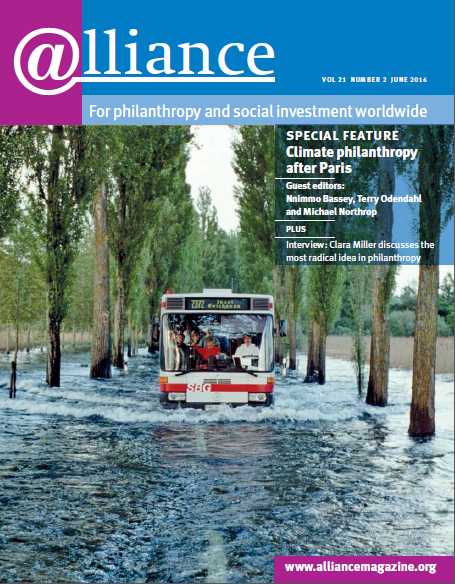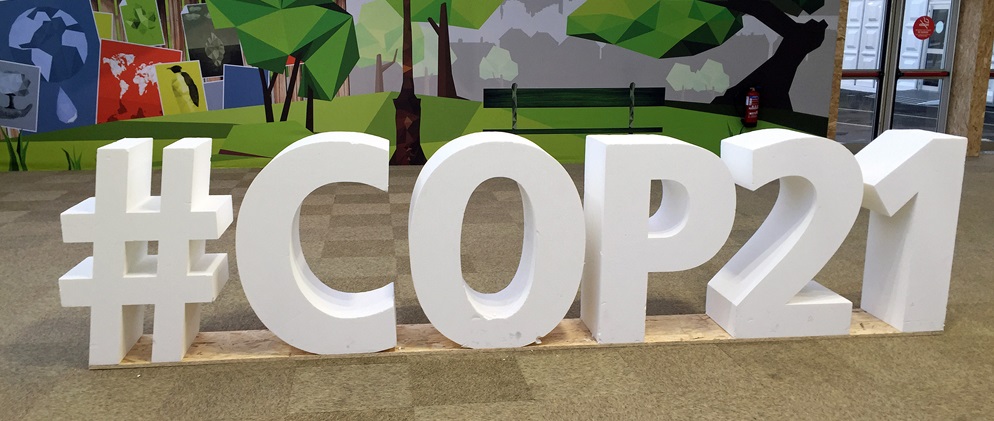The December 2015 Paris Agreement, and the thousands of commitments it catalysed, is the first truly meaningful global response to the climate crisis. Together, the commitments made at Paris by national governments, states, cities, businesses, banks, investors, land managers, builders and civil society groups have generated enormous hope and promise. The Paris Agreement is not legally binding, however, and it has no enforcement provisions. Those who made commitments must follow through voluntarily, and additional measures must also be taken beyond what was committed to in Paris if the world is to cap warming at 1.5 °C.
‘In Paris, 188 nations formally submitted plans to reduce their greenhouse gas emissions. In the aggregate, those plans will reduce global emissions by about half of what scientists say is necessary.’
In Paris, 188 nations formally submitted plans to reduce their greenhouse gas emissions. In the aggregate, those plans will reduce global emissions by about half of what scientists say is necessary. Governments also successfully negotiated the framework for a credible international monitoring, review and verification system to track emissions and monitor progress; they collectively promised to mobilize at least $100 billion annually to help developing economies make the transition to a low-carbon future; and they agreed that global temperatures should rise by no more than 1.5 °C.
While these national and multilateral steps were the cornerstone of the Paris Agreement, the cascade of commitments at the sub-national level were just as important: the agreements by 123 states and regions to reduce emissions by 80 per cent or emit no more than 2 tons of CO2 per capita; or by 436 mayors to join a Global Compact of Cities to support worldwide municipal action on climate; or by 90 of those mayors to reduce emissions by at least 80 per cent by 2050; or by 500 endowments, cities, faith institutions, pension funds and universities with combined assets under management of $3.4 trillion to divest from coal and in many cases other fossil fuels too; or by 53 global companies including Apple, Google, IKEA, Unilever and Walmart to shift to 100 per cent renewable energy; or by the World Green Building Council to only build and renovate buildings to a zero net energy standard by 2050; or by 8,200 hospitals and 13 million doctors to commit to reduce their carbon footprints, divest from fossil fuels and prioritize the health impacts of climate on their communities; and by land managers in Africa and Latin America to restore 140 million hectares of degraded forest land, which will allow these lands to become carbon sinks.
A third basket of sectoral and cross-cutting priorities also emerged from the build-up and follow-up to Paris. These included a push to regulate use of hydrofluorocarbons (HFCs), a refrigerant gas that is 1,000 times more powerful than CO2 as a greenhouse gas; growing support for international agreements to reduce aviation and marine emissions; increasing pressure on all finance, banking and multilateral development organizations to cease financing coal-fired electricity and mining, and to turn their sights to clean energy investments exclusively; a determination to further increase the amount of funds divested from fossil fuel investments; a commitment by the African Union and the African Development Bank to deliver at least 300 gigawatts of renewable energy to the continent by 2030; and a growing movement among civil society groups to urge the cessation of all fossil fuel development. Civil society groups like 350.org and Avaaz are adamant that the so-called ‘carbon bombs’ – the dozen largest fossil fuel deposits – must not be exploited, and they are gearing up globally to prevent their development.
‘It bears repeating that most of these commitments are strictly voluntary. Public pressure, norms of acceptable behaviour and a growing realization that our planet is at risk need to be the drivers of success.’
It bears repeating that most of these commitments are strictly voluntary. Public pressure, norms of acceptable behaviour and a growing realization that our planet is at risk need to be the drivers of success. No one will be immune from pressure or responsibility as we navigate the path forward. And we can already see a strengthening civil society voice calling for adherence to both the specifics and the spirit of Paris.
What has driven and will continue to power the voice of civil society groups, and has been behind the capacity building to date that has allowed so much positive movement worldwide, is the generosity of a very diverse philanthropic sector. After the failure of Copenhagen six years ago, many climate donors decided to leave the field or they dialled back their expectations and support for climate change work. Remarkably, donors then rallied impressively between 2013 and 2015 in support of nearly every facet of the global push for a success in Paris.
Groups of donors, for example, came together to support work by subnational governments, business, and faith groups, and on topics as diverse as land use, coal, clean energy, buildings, electric vehicles, HFCs and divestment, among others. It appears now that many of the same groups of donors are trying to rally themselves once again for the next push on climate.
That’s good news. The goal line for achieving success seems to move nearer and nearer. Scientists are now saying we will need global emissions to peak by 2020 if we are to have a serious chance of limiting warming to 1.5°C. In addition, the scale of the work required has grown dramatically. We are well past funding model programmes and pilot projects. Now donors must also find ways to support mega-commitments made in Paris like the ones to new renewable power in Africa, reforestation in Africa and Latin America, and to keeping the 12 largest carbon bombs in the ground.
‘Donors will need to be creative and nimble like never before. They will need to collaborate more. And ultimately donors, like the NGOs they typically support, will have to change gear to handle the enormous needs coming at them.’
The work to ensure delivery of the Paris commitments is unprecedented in scale, as are the funds required by donors to operate at a scale commensurate with the challenges. Donors will need to be creative and nimble like never before. They will need to collaborate more. And ultimately donors, like the NGOs they typically support, will have to change gear to handle the enormous needs coming at them. The time for a step change in climate philanthropy is now.
Michael Northrop is one of the guest editors for this Alliance special feature. He is director of the Sustainable Development Program at the Rockefeller Brothers Fund. Email mnorthrop@rbf.org
KEY FACTS ABOUT THE PARIS AGREEMENT
• 195 nations approved an agreement to tackle climate change on 12 December 2015 following the largest gathering of heads of state in history.
• Governments agreed to ‘pursue efforts’ to limit global warming to 1.5°C above pre-industrial levels – which scientists say is the minimum threshold of safety for the planet – and to achieve net zero greenhouse gas emissions by the second half of this century.
• 188 national climate action plans – ‘Intended Nationally Defined Contributions’ or INDCs – were submitted. These action plans will be reviewed, and improved, every five years.
But …
• Neither the framework agreement nor the INDCs are legally binding.
• If you add up all the INDCs, they get us to either 2.4°C or 2.6°C – not to 1.5°C or even 2°C.
• There is a gap with regard to climate justice.
For the full text of the Paris Agreement, see http://tinyurl.com/zo3nbrr
See interview with Rockefeller Brothers Fund president Stephen Heintz published in Alliance Extra on 3 May. http://www.alliancemagazine.org/interview/interview-stephen-heintz
EXAMPLES OF DONOR COLLOBORATION
European Climate Foundation
The European Climate Foundation (ECF) – a ‘foundation of foundations’ – was established in early 2008 as a major philanthropic initiative to promote climate and energy policies that would greatly reduce Europe‘s greenhouse gas emissions and to help Europe play a stronger international leadership role in mitigating climate change. It has eight core funders, with project funding coming from a variety of others.
Breakthrough Energy Coalition
Bill Gates announced the creation of the Breakthrough Energy Coalition at COP21. It is a global group of 28 high net wealth investors from 10 countries committed to funding clean energy companies emerging from the initiatives of Mission Innovation, a global initiative to accelerate public and private clean energy innovation also announced by Gates in Paris. Coalition members include Richard Branson, Jack Ma, George Soros and Mark Zuckerberg.
RENEWABLE ENERGY FOR THE 21ST CENTURY
It is startling to learn how fast electricity systems are transforming themselves to renewables. The Renewable Energy Policy Network for the 21st Century, known as REN21, reports that 28.9 per cent of the world’s power-generating capacity is now renewable, and that 60 per cent of all new energy investment in 2015 was in renewable energy not traditional fossil fuel power.
Looking back over ten years from its founding, REN21 notes that installed solar for electricity has grown from a total of 2.6 gigawatts (GW) in 2004 to 277 GW in 2015. Solar for hot water has jumped from 86 GW to 435 GW, and installed wind has increased from 48 GW to 433 GW during the same period. These numbers far exceed any predictions made ten years ago and give hope that the much-needed future transformation will also exceed expectations.
China’s growth path on renewables is one reason to be optimistic. China now promises it will have deployed 200 GW of solar PV and 250 GW of wind by 2020. US deployment of solar and wind has also been growing nicely, with best ever years for both solar and wind in 2015.
Global renewable energy investment is another reason for hope. REN21 reports that dollars invested in renewables was $285.9 billion, up from $45 billion in 2004.
In one of the most telling signs of change, national policies designed to boost renewable energy use are now in place in 173 countries, up from just 48 in 2004.
See the 2016 report in full http://www.ren21.net/gsr








Comments (0)